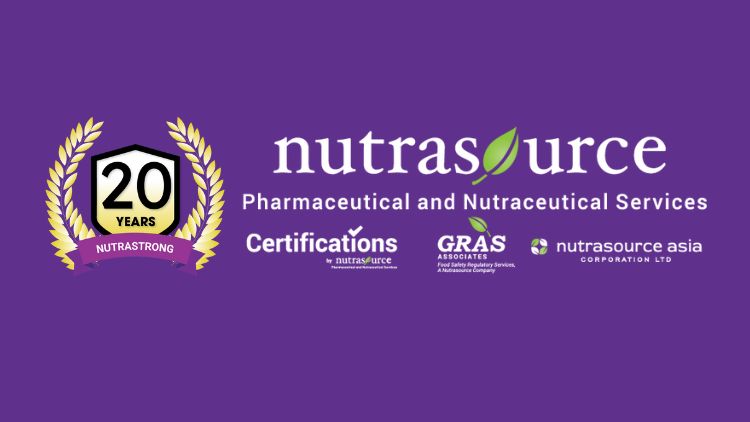Promotional Features
How to Launch Pioneering Probiotic Products
In only a little more than three years from now, consumers worldwide will spend approximately $70 billion on foods, beverages and dietary supplements containing probiotics. There are two forces driving this invigorated market forward – increased clinical investigation of new strains as well as research and development of existing strains for new indications.
For example, a study published in Nature Medicine* found a probiotic strain of the Veillonella genus to significantly enhance treadmill endurance versus placebo in a mouse model. The bacteria strain was originally obtained from a marathon runner, and the research team believes that this strain has potential to be commercialized for the sports nutrition arena. In the new use realm, there is probiotic research supporting everything from gastrointestinal health, to kidney health, to vaginal health.
As this is occurring, safety and viability of these products needs to validated for the global marketplace. When there is precious little science on a new strain or only a handful of studies on a new application – how do you take advantage of the market, and how do you pioneer to claim that space?
To RCT or Not to RCT
If you have faith in your novel probiotic product and wish to make a health claim, investing in a randomized controlled trial (RCT) is a necessary first step to regulatory approval for market access, regardless of region. Novel probiotic strains without history of use the food supply require both animal toxicology studies and well-designed human RCT’s to validate safety and efficacy.
Because your RCT will inform your product claims and all marketing messaging around the product, ensure that your study design has a built-in long-term strategy that can serve multiple functions beyond the probiotic product’s safety. This includes substantiating structure-function health claims as well as supporting intellectual property positioning – your probiotic product needs adequate substantiation to demonstrate your structure/function claim is truthful and non-misleading.
Your best bet in such situations is working with a contract research organization (CRO) that has numerous probiotic trials of multiple strains and conditions as a foundation of experience.
The singular distinction that any and all probiotics have is that they are whole, living organisms that must remain alive through not only consumption but digestion. This distinction necessitates more scrutiny by regulatory agencies. In fact, the regulatory arena poses another challenge as it is a tricky, arduous and complex bog to wade through for successful launch of a probiotic product.
US Regulations
Your new strain or new use is subject to tremendous scrutiny, and thank goodness you have worked with a reputable CRO for that RCT. In the US, novel probiotics need to be evaluated at the strain level and shown to be safe for use in foods, beverages and dietary supplements. This is accomplished through a Generally Recognized as Safe (GRAS) conclusion or a New Dietary Ingredient Notification (NDIN).
GRAS applies to any ingredient intentionally added to foods (including supplements) that is not a food additive or prior sanctioned ingredient. Achieving GRAS status is ever-more valuable for ingestible products. To summarize, GRAS approval necessitates demonstrated proof that the probiotic does no harm when used as intended. It isn’t enough to simply hand over your dossier, though. A successful submission needs to contain a complete safety review in the format and content the FDA expects.
An NDIN is a notification that is required by the FDA to be submitted for a dietary ingredient that was never marketed in the US as a dietary supplement prior to October 15, 1994.
With GRAS, notification to FDA is voluntary but it is mandatory with NDIN. Also, with GRAS, your pre-, pro- and synbiotic’s supporting safety data must be publicly available and use of Expert Panel review is typical; but with NDIN, supporting safety data is not required to be publicly available. With NDIN, use is based on recommended intake and can exclude certain populations but GRAS approval needs you to show that your probiotic is specific to the intended use – food categories must be selected and a consumption analysis is needed to determine maximum daily intake possible (in this case, CFUs). Safety data must support intended level of use.
If this sounds daunting, it needn’t be. There are expert resources such as GRAS Associates, LLC, a Nutrasource company, devoted to helping the food and supplement industry navigate RCTs, GRAS, NDIN and other regulatory agency requirements for global market access. GRAS Associates has completed more than 15% of all GRAS notices received by the FDA since 2008 and has an enviable 90% success rate (compared to an industry average of 72%).
Canadian Regulations
In Canada, your new pre- pro and synbiotic products (new strain or new use) are appropriately known as Natural Health Products (NHPs), and Health Canada requires pre-market approval before they can be sold. Companies need to file a Product License Application (PLA), Class I II or III to the Natural and Non-Prescription Health Products Directorate (NNHPD) of Health Canada.
New or uncommonly used strains or formulas will likely fall under Class III filing for ingredients or products that have the lowest levels of certainty, require superior level RCTs and subject to Health Canada’s 210-day performance standard for licensing.
Conclusion
If you are interested in expanding your pre-, pro- or synbiotic line or starting a new one, you have plenty of opportunity. Market research analyst firm Innova Market Insights noted in a January 2019 report (“Nutrition focus Probiotics”) that probiotics are showing up in foods with bakery products being the most prevalent, followed by sauces and seasonings, soft drinks, cereals and dairy foods.
New friendly flora products are addressing support and replenishment of the microbiome, vaginal health, digestive-specific indications such as IBS, sports nutrition and more – to satisfy almost rapacious consumer demand for all things probiotic. This is a perfect time to collaborate with an expert CRO that will help you launch your pre-, pro- and synbiotic product with sound, compelling science and regulatory approval to provide confidence in its long-term market success.
*Scheiman, et al. “Meta-omics analysis of elite athletes identifies a performance-enhancing microbe that functions via lactate metabolism” Nature Med. VOL 25 | JULY 2019 | 1104–1109






